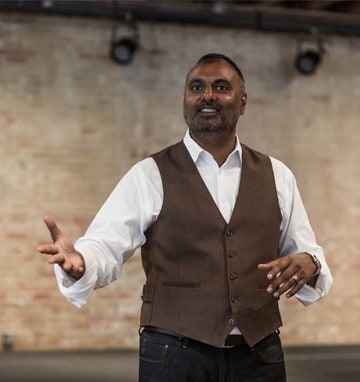As a CTO, I can definitely say without a doubt that few people understand what a CTO does. When I tell someone I’m a CTO, I’m often met with a blank stare. Even when someone is aware of what a CTO does, they often have limited context due to the wide variety of CTO roles.
A chief technology officer (CTO) is a C-suite executive who is focused on scientific and technological issues including web applications, mobile applications, electronic and digital media development. A CTO will guide your product strategy, market validation, architectural decisions, process optimization, recruiting, and hiring. Ideally, they will help you understand technology ROI, innovation accounting, and also help you understand where you can cut costs and where you need to invest.
I have assembled a list of all the potential skills and responsibilities expected of a CTO. Not all CTOs perform all of these duties but some do. I have also included quotes from Austin CTOs to give you additional perspective.
The Face of the Product and Technology
A CTO is often the face of the technology and product. If outward facing, they will attend important sales calls and speak to the technology strategy and vision. They will attend conferences and tradeshows to evangelize your product and technology. One particularly outspoken CTO is Werner Vogels, from amazon, check him out if you haven’t already, he usually comes to speak during SXSW and he is always entertaining.
“CTOs are typically inward facing or outward facing. The former are typically the chief scientists or primary innovators of nascent companies and focus on building the initial invention. The latter are strategists and evangelists and focus on product-market fit, market trends, and product planning. Many CTOs grow from inward to outward facing as their companies grow and the demands of the position change.“ — Neil Dholakia, CTO, Keller Williams

Business Liaison
Working closely with stakeholders, CTOs help ensure that the business objectives and needs align with the current and future technology strategy. They translate business speak into technical terms and also explain technology solutions in layman’s terms. This allows both the business and technology teams to understand goals, business objectives, technology, and potential solutions.
“l always make sure I’m meeting my coworker’s needs and expectations by Make time to listen to them and then asking ‘Where am I wrong?’ as I only improve by addressing my deficiencies.” — Robert Reeves, CTO, Daticle

They collaborate with your executive leadership team to identify how technology can be used strategically to accomplish all company goals while mitigating risk. They seek the 80/20 economical solution, present options, and discuss tradeoffs.
“A CTO’s real value is in finding opportunities with asymmetric payoffs. A large part of S3’s success derives from the compounding benefits of these opportunities.“ — John Standerfer, CTO, S3

Product Strategy
In collaboration with the executive leadership team, a CTO will translate your corporate mission and vision into a coherent product strategy. They will articulate how technology can be used strategically to accomplish all company goals while mitigating risk. Starting with an audit of your current strategy, the competitive landscape, a deep understanding of your business objectives, and customer discovery, a CTO will develop a holistic product roadmap that will provide you the unfair advantage you need to succeed in the market.
“I’m responsible for ensuring we execute on our business and product strategy and I straddle the line between technical perfection and business needs.” — Meetesh, CTO, The Zebra

Most organizations frame their software work from the perspective of projects, when in fact software must be treated as a product, which requires dedicated nurturing and care. A talented CTO will enable your technology pursuits by conducting a technology transformation from project to product focus.
“A CTO must drive cohesive product strategy and execution inclusive of go-to-market and technology considerations. The most innovative product strategies often result from ‘making puzzles out of pieces that were never considered to be combined’. Think ‘Reese’s Peanut Butter Cups’ for business domains.” — Jim Colson, CTO, IBM Watson Solutions

Their charter is to see the big picture and develop it into a roadmap, adjusting for insights from customer discovery and driving towards product market fit. They adopt, measure, and manage key product performance metrics.
“The CTO’s role is to outline the technical vision and empower the team to execute. I spend most of my time researching technologies, prototyping ideas, and evangelizing what the team is building and why it’s relevant to the long-term vision.” — Bryon Jacob, CTO data.world

Technical Architecture & R&D
A CTO tracks and shares technology trend insights for your industry. They will provide strategic technical guidance and direction with attention to scalability, security, quality, maintainability, and reliability. A new CTO will conduct a thorough audit and a holistic technology assessment, in order to codify your strengths and weaknesses.
“A CTO is in the business of scale, for whatever an organization has as its core metrics. Getting there involves building an environment for tech people based on clarity around those metrics.” — William Ballard, CTO, GLG

Vendor Management & IT
Unless you have a dedicated CIO, your CTO will be responsible for IT as well. They will manage the steps necessary to identify, select, and integrate your software and IT vendors, including third party product dependencies, email, network, wiki, intranet, project management, and telecommunications. They will review and negotiate all related contracts. They are responsible for detailed ROI evaluation, build-vs-buy determinations, budgeting, and overall tech capital allocation.
Build and Grow the Product Team
Proficient in building, motivating and inspiring talent, a CTO can invigorate your organization to achieve new heights. They will advise and guide you through proper recruiting and on-boarding techniques including proper methods and procedures for attracting and retaining top technical talent.
“A CTO must be able to build an effective team. That means creating an environment where people have authority, autonomy, and accountability for the work they do. Authority to make decisions. Autonomy to self-manage. And Accountability for the first two.” — Allen Darnell, CTO, Silver Car

A veteran CTO will have a well-established network and will leverage that network as they are assisting you in building your team of software professionals. They will draw from their expert perspective and are capable of applying a broader spectrum of experience across many technologies as they help you plan your engineering process and culture.
“The CTO role varies greatly with company size, growth rate, and use of technology in the business, etc. But every CTO must foster strategic communication, prioritization, and alignment across the full organization in order to succeed.” — William Baxter, CTO, Seriesx

Product Process and Developer Experience
A CTO, sometimes with the support of a VP of Engineering, will identify and manage your development methodology. This includes all developer experience and related touch points from source control, build tooling, continuous integration, deployment machinery, DevOps, and release strategy.
“The key to being successful at Whole Foods was to embrace the culture, and match your activities, services and language to it.“ — Mike Clifford, former CTO, Whole Foods Market

Their efforts in this area can increase release velocity, improve the quality of deliverables, create and enhance safe visibility into production for dev and QA teams, create transparency for non-technical staff into the technical organization, and promote end-to-end responsibility and shared ownership for all aspects of software delivery.
“Security needs to be top of mind for any CTO. Some of my most satisfying projects are when we make improvements in, say, developer productivity that also pay a “security dividend”. I love it because bad solutions in improving security and reducing engineering friction can be at odds with each other — great solutions enhance both.” — Eric Falcao, CTO, Spredfast

Security, Compliance, and Disaster Recovery
A CTO develops and implements organization-wide policies and processes for site availability, information security, and privacy as well as Disaster Recovery and Business Continuity Planning. They shorten the sales cycle, mitigate risks, and provide assurance in the context of technical due diligence. They provide a variety of compliance solutions for such cases as SOCS and PCI.
“There are two types of CTO’s: Up-and-Out, and Down-and-In. Down-and-In CTO’s are expected to solve really hard technical problems; Up-and-Out CTO’s are expected to explain to the rest of the world the value of the really hard technical problems their company has solved. A world-class CTO is expected to do both.” — Tom Bishop, CTO

Technical Due Diligence and M&A
CTOs routinely audit technology options from a technical feasibility perspective in addition to cost benefit. Once they understand ROI and necessary technical parameters they make a recommendation on the most advantageous route or present alternatives with associated trade-offs.
“Acquisitions at HomeAway were uniquely challenging as they were primarily business driven decisions. We had to immediately plan for supporting multiple disparate platforms while planning actual integration into our core platform.” — Alex Victoria, CTO, Civitas Learning

They all play a critical role in M&A and other diligence activities. When your company is looking to acquire a company, they will conduct a thorough analysis of the target company’s culture, technology, and security. If your company is the acquisition target or if you are raising money, your CTO is responsible for insuring that all the requested information, processes, and procedures are cleanly documented and available for inspection.
Conclusion
Depending on the industry and size of a company the CTO role varies widely. Hopefully this overview provided some perspective of the full gamut of skills and responsibilities expected of CTOs. If you are currently looking for a CTO or technical co-founder, I’ve included some resources below that may help you in your search. If you are looking in the central Texas area, send me a note, I run a meetup for CTOs and sometimes know of folks who are looking around for something new.
Fractional CTO
A fractional CTO is an accomplished CTO who can provide trusted advice and technical guidance you require at a fraction of the cost, freeing up budget for individual contributors who will execute efficiently and effectively under their leadership. A quick search of linkedin will help you locate a fractional CTO in your area.
Online Resources & Boards
The following job boards and other related resources are a cost effective recruiting tool. Most of these are going to skew towards less experienced candidates, but if you are willing to spend the time, you may find a good fit.
- Austin CTO Meetup
- Built in Austin
- Indeed
- Hired
- AngelList
- Y-Combinator — Hackernews
Retained Recruiter Search
A retained search by an experienced executive recruiter is your best option to find a seasoned CTO candidate.
- HireStarter
- SPMB
- Stringer Executive Search
- The Bidding Network
- Whiterock Partners
Douglas Ferguson is a Fractional CTO and founder of Voltage Control. Voltage Control specializes in Innovation Workshops such as Design Sprints. We facilitate Design Sprints in Austin, Houston, San Antonio, Dallas, New York, and San Francisco. Please email douglas@voltagecontrol.co if you are interested in having him facilitate your Sprint, coach your team on how to run an effective Sprint, or are curious to learn more about how a Sprint might help your company or product.


